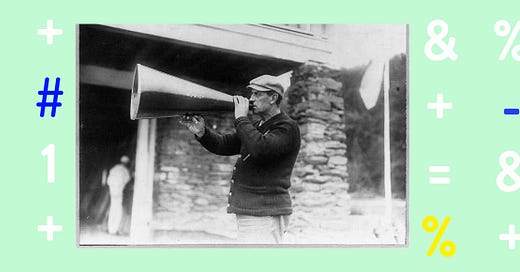How to Prevent Political Violence
“At some point, you got to look in the mirror, when you look at what’s going on here — every single elected official does.” ~ Sen. Amy Klobuchar
“Do you want to continue this cycle of violence?”
This is the question that Curtis Toler, a former gang leader and current violence interrupter, asks young men and women involved in street violence. Sometimes he has to ask it 10 times before someone finally says “No.” Because once violence starts, it’s very hard to stop.
That’s how high conflict works; it feeds on itself, destroying just about everything along the way. It is possible to escape this prison, however, and it usually starts with asking this question.
It’s the same question Toler has told me to ask anyone trapped in dysfunctional, violent conflict. Do you want to continue this cycle of violence?
That is the question we should all be asking our elected leaders today. This weekend, a Minnesota state representative and her husband were shot and killed at their home by a man posing as a police officer. Another legislator and his wife were shot and wounded. This is not a freak occurrence. It’s becoming routine, as Lisa Lerer reminded us in the New York Times on Saturday:
“In the past three months alone, a man set fire to the Pennsylvania governor’s residence while [Gov. Josh] Shapiro and his family were asleep inside; another man gunned down a pair of workers from the Israeli Embassy outside an event in Washington; protesters calling for the release of Israeli hostages in Boulder, Colo., were set on fire; and the Republican Party headquarters in New Mexico and a Tesla dealership near Albuquerque were firebombed.”
But nothing about this violence is inevitable. Just because it feels out of our control doesn’t mean that it is.
So what can we do? “One of the hardest things to get people to understand is that violence usually emerges when there’s a threat — or a perception of a threat,” Toler told me for a Politico story a while back. “And the threat doesn’t always have to be physical. The threat can be the threat of something being lost, whatever that is — my manhood, my territory, whatever.”
One powerful way to reduce political violence, then, is to lower the threat level. There will always be violent people. But they will not always choose politicians or protesters as their target. They tend to do that when influential people convince them they are threatened–and blame this or that group. Any language that heightens the sense of threat helps create the conditions for violence.
It is time to invite politicians to the table to come up with a short list of ways they can lower the threat level. Condemning violence after the fact is not enough. We need a nonaggression pact that politicians can commit to for the future. And the politicians themselves need to help craft that pact.
Certain politicians are amping up the sense of threat far more than others. Pres. Donald Trump in particular has a long history of dialing up the threat level, using violent, dehumanizing language and stoking fear and blame. He himself has also been the victim of violence, including two assassination attempts. People like Trump may not come to the table, but you need to keep inviting them, Toler says. You just never know.
For now, start by reaching out to people in your preferred political party — because those are the only people who might listen to you, at first. “The sales pitch is really asking the question: ‘Do you want to continue this cycle?’” Toler says. “And sometimes they will say ‘Yes.’ Then the next question is, ‘Do you want your family members to have to go through what you’re going through?’ Sometimes it helps to remind them of the effect of the conflict on others, beyond themselves.”
Political violence can be prevented, as experts Rachel Kleinfeld and Nicole Bibbins Sedaca remind us here. Leaders must insist on nonviolence, uphold the rule of law and work to control extremists in their midst, among other things. It’s not a big mystery, but it will require courage and creativity. You can’t get out of high conflict by using the same tactics that got us into it.
Four years ago, I started Good Conflict with my dear friend and fellow journalist Hélène Biandudi Hofer to help prevent exactly the kind of violence we saw this weekend. It is excruciating to watch these things keep happening. But we remain convinced that helping people understand how conflict works will make us all less vulnerable to manipulation. We know it can happen because we have seen it happen. But we need more elected officials and other high-profile public figures to agree on some guard rails and demonstrate what real courage looks like.
Politicians, like journalists, helped get us into this mess; it will take everyone, including you, to help get us out. What can you do to help lower the threat level in your community — or in your heart? Let me know in the comments, and tell me how we can help support you. Thank you.
© 2025 Amanda Ripley. See privacy, terms and information collection notice.






Thank you for this. We need a hopeful next step. Your wisdom is always a gift.
I agree with every point in here and asking, "Do you want this cycle of violence to continue?" up to 10 times. Persistence and peace go hand in hand.